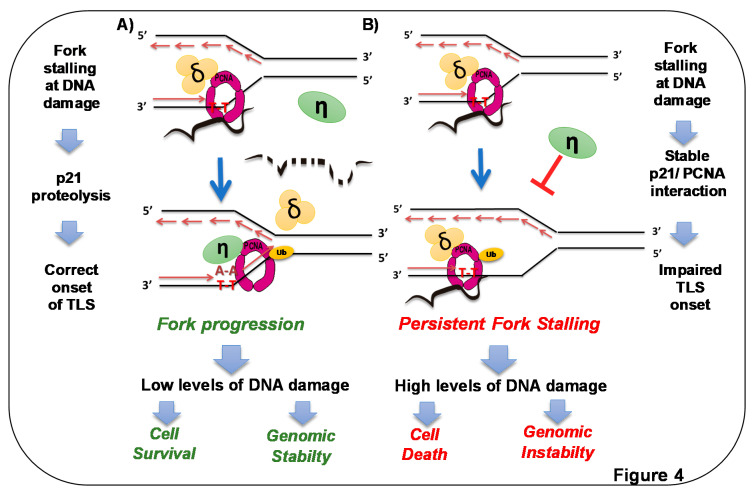Figure 4.
p21 overexpression in S phase triggers cell death by preventing DNA replication across DNA lesions. A) Endogenous p21 is degraded at sites of DNA lesions. Elimination of p21 [50] and concomitant ubiquitination of PCNA [24,98] promote loading of specialized DNA polymerases at forks stalled at DNA lesions [50]. In this way, p21 prevents loading such polymerases in undamaged templates [79], but when DNA lesions are encountered by replication forks, rapid CRLCdt2-mediated removal of p21 facilitates replication across DNA lesions (dotted p21 represents p21 degradation) [50]. B) When p21 degradation is prevented in the context of high PCNA ubiquitination, the recruitment of specialized polymerases to replication factories is impaired. Replicative polymerases stall persistently at DNA lesions, and forks collapse, triggering cell death and genomic instability [50]. Stable p21–PCNA interaction is essential for such a role of p21 in TLS inhibition.

